

Higher and foundation tiers
When you think about chemical reactions you need to consider two key words or terms which are often used in describing chemical reactions; that is the system and the surroundings. The system is the chemicals or reacting molecules while the surroundings are the test-tubes or beakers in which the chemical reactions happen. The surroundings also include the classroom and everything else around it. Basically everything except the chemicals that are reacting are the surroundings.
Some common chemical reactions that you will have likely carried out in the lab are:
Can you guess what all these reactions have in common? Well all these chemical reactions release heat energy to the surroundings. They are all exothermic reactions.
An exothermic reaction releases heat energy to the surroundings. A thermometer (part of the surroundings) would measure an increase in temperature during an exothermic reaction.
The neutralisation reaction between an acid and an alkali is a good example of an exothermic reaction that takes place in solution. Even using fairly dilute solutions a thermometer placed in a beaker containing a mixture of say hydrochloric acid and the alkali sodium hydroxide; as shown below; will record a temperature rise of around 250C. Many oxidation reactions such as the combustion of metals such as magnesium are also highly exothermic reactions and will release large amounts of heat energy to the surroundings.
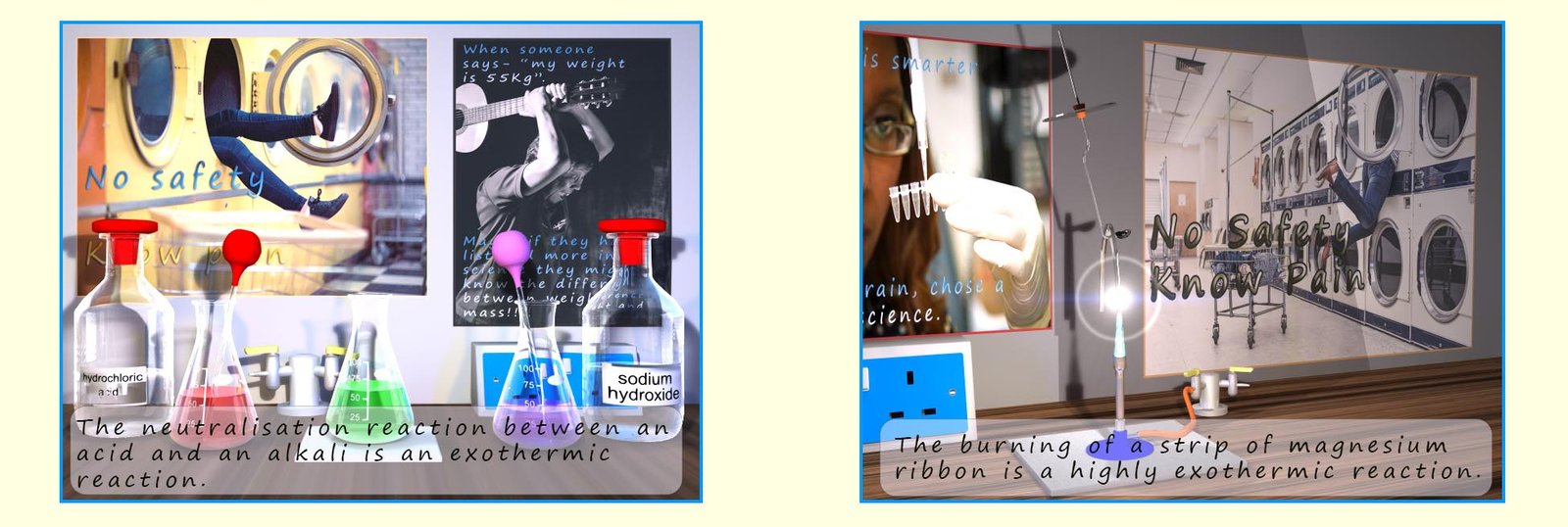
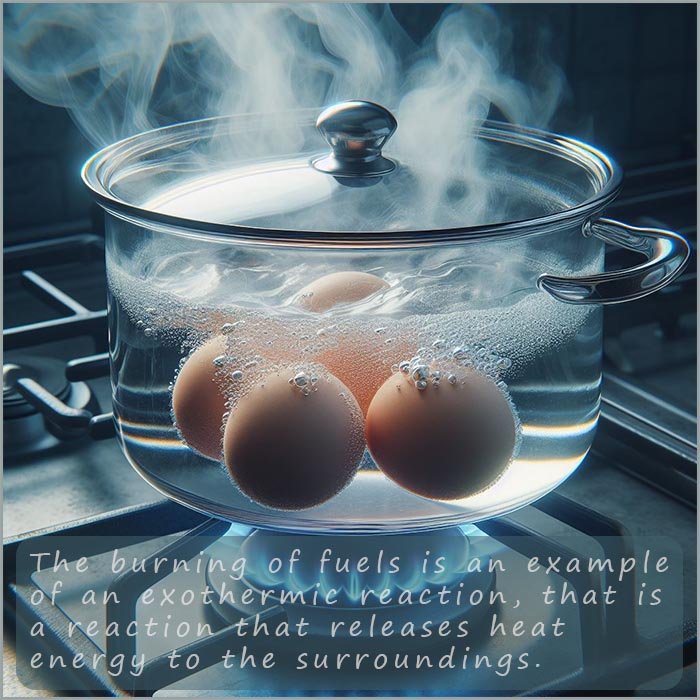
The reacting chemicals (the system) in a chemical reaction acts as a store of chemical energy, the energy is stored in the chemical bonds present in the reactant and product molecules. During an exothermic reaction the system loses energy to the surrounding; mainly as heat. The temperature of the surrounding will increase.
Now remember the law of conservation of energy;
this states that energy cannot be created or
destroyed, but only changed from one form to another. So if the reacting chemicals lose energy then the surrounding must
gain the exact same amount of energy lost by the reacting chemicals (the system).
Or put simply the product molecules must contain less energy than the reactant molecules and the difference in energy stored between the reactant and product molecules is exactly the amount of energy transferred to the surroundings. That is to say energy is conserved in a chemical reaction. The transfer of heat energy during exothermic and endothermic reactions is usually represented in an energy profile diagram.

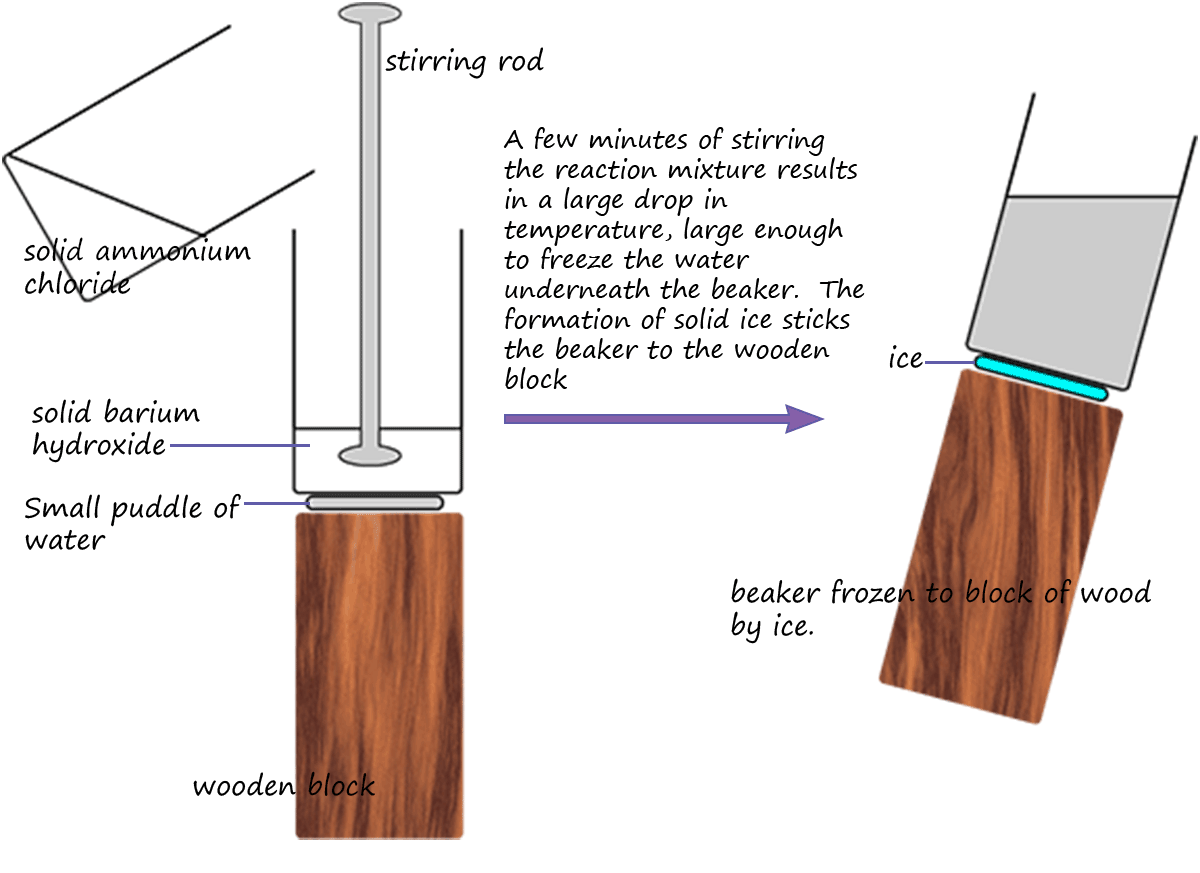 Have you ever sucked on a sherbet sweet and felt your mouth getting slightly cooler? Well this is because there is an
endothermic reaction taking place in your mouth. Sour sherbet sweets contain citric acid and a base called sodium
bicarbonate (sodium hydrogen carbonate). In your mouth these chemical react to release carbon dioxide gas; which gives the fizzing sensation when
you eat sherbet, but the reaction between citric acid and sodium bicarbonate is an endothermic one. It removes
heat
energy from the surrounding and in this case the surroundings are your mouth! So you should feel a cooling sensation
in your mouth as you enjoy eating fizzy sherbet sweets.
Have you ever sucked on a sherbet sweet and felt your mouth getting slightly cooler? Well this is because there is an
endothermic reaction taking place in your mouth. Sour sherbet sweets contain citric acid and a base called sodium
bicarbonate (sodium hydrogen carbonate). In your mouth these chemical react to release carbon dioxide gas; which gives the fizzing sensation when
you eat sherbet, but the reaction between citric acid and sodium bicarbonate is an endothermic one. It removes
heat
energy from the surrounding and in this case the surroundings are your mouth! So you should feel a cooling sensation
in your mouth as you enjoy eating fizzy sherbet sweets.
In an endothermic reaction the product molecules contain more energy than the reactant molecules; that is there is more energy stored in the chemical bonds in the products than in the reactant molecules. This extra energy gained by the product molecules is removed from the surrounding, that is why the temperature of the surrounding drops during an endothermic reaction.
Endothermic reactions are much less common than exothermic reactions.
One of the most spectacular endothermic
reactions that you may see is where solid ammonium chloride is added to a beaker containing solid barium hydroxide.
The beaker containing the solid barium hydroxide is sitting on top of a block of wood on which a small pool
of water has been added as shown in the image opposite. When the two solids are added together and stirred vigorously so much
heat is removed
from the surroundings by the reacting chemicals that the pool of water under the beaker freezes and forms a solid block of ice. This ice
is so thick that it will stick the beaker to the wooden block.
The temperature changes are also very dramatic here.
If the experiment is done in a lab at room temperature (250C) then during the experiment a thermometer placed in the reacting chemicals may read as low -100C; a temperature drop of 350C. In this experiment the reacting chemicals;
the system; has gained
energy from the surrounding. As a consequence the
temperature of the surroundings, which includes the thermometer, has dropped since they have lost heat energy.
An endothermic reaction removes heat energy from the surroundings. A thermometer (part of the surroundings) would measure a decrease in temperature during an endothermic reaction.
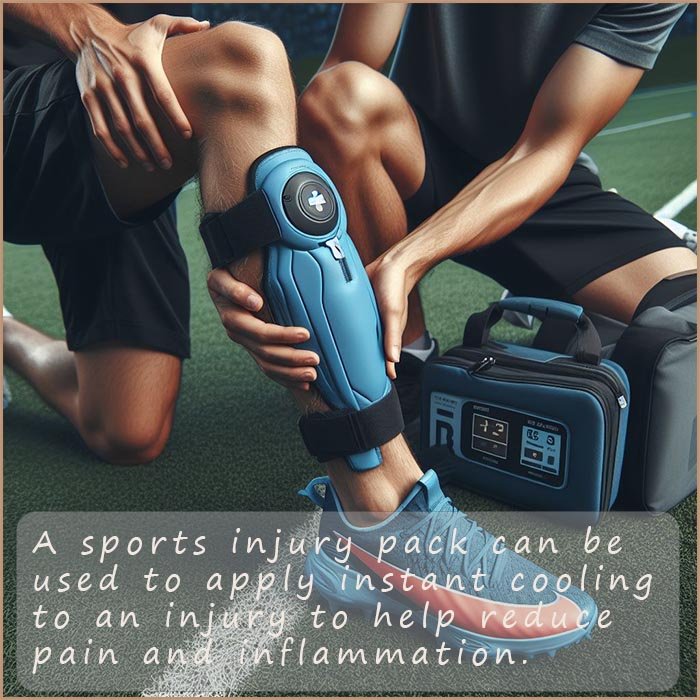
Many athletes can easily pick up an injury such as a muscle tear or strain to their joints, this will result in soft tissue damage occurring and the injury site may begin to swell. Applying a cold sports injury pack to injury site can result in a decrease in fluid build up and swelling at the site of the injury. These sports injury packs rely on an
endothermic reaction to apply instant cooling to an injury to help reduce swelling and pain. The
endothermic reactions that occur in sports injury cooling packs can also be applied to your forehead to relieve migraines and headaches.
Other types of sports injury pack contain chemicals that when activated react exothermically to release heat into the site of injury or pain. This type of sports injury pack is often used to treat long term injuries. The
heat released causes the blood vessels to dilate or widen which helps delivers more blood into the injury site and this can helps in the healing of damaged tissues.
Decomposition reactions occur when a substance breaks down into smaller simpler substances. Metal carbonates for example will decompose or break up when heated strongly to form a metal oxide and release the gas carbon dioxide; as shown in the image opposite. The thermal decomposition of a metal carbonate is another example of an endothermic reaction.
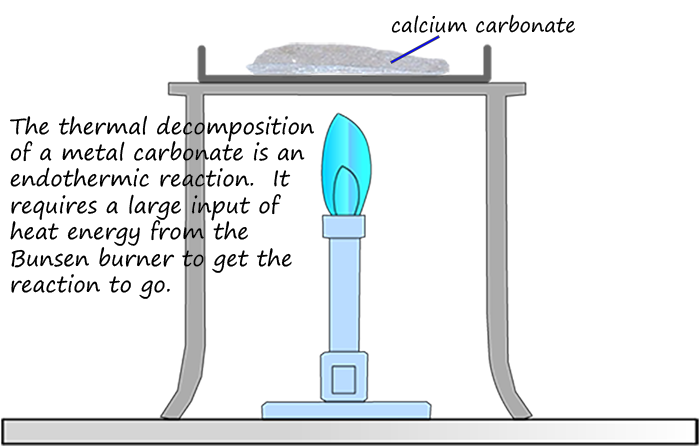
Next